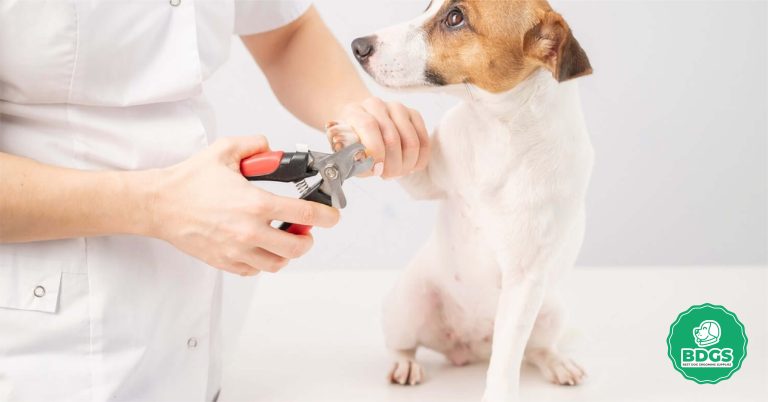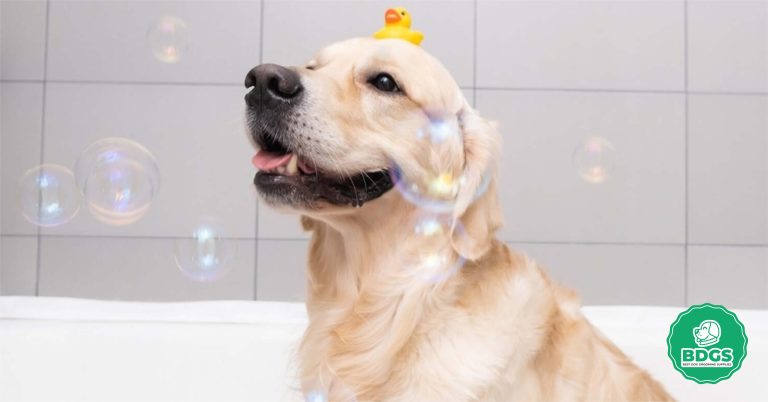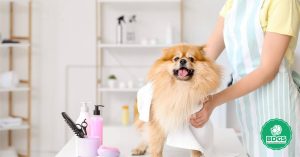Dog Bath is important for their general health and well-being, not just to keep them clean and feeling good. As a responsible pet owner, you must know how to bathe your furry friend properly.
This detailed guide will show you how to bathe your dog, how often you should do it, and give you tips to make the experience fun for both you and your furry friend.
Introduction
What is Bathing a Dog?
To clean a dog’s fur and skin, use water and a shampoo made just for dogs. It helps remove dirt, smells, allergens, and free hair, keeping your dog clean and happy.
Why is it Important to Bathe Your Dog?
For your dog’s coat and skin to stay healthy, it must be bathed often. It stops skin diseases, bug invasions, and sweating too much. Also, bathing your dog strengthens the bond between you and your loyal friend.
How Often Should You Bathe Your Dog?
How often your dog needs a bath depends on many things, like its breed, how active it is, and how it lives. Most dogs do better after getting a bath every 4 to 8 weeks. But some breeds with slick coats may need to be washed more often, while others with coats that repel water may need to be washed less often.
Different Types of Dog Shampoos
There are many kinds of shampoo for dogs, and each one meets a different need:
- Regular Dog Shampoo: Most dogs with normal skin and fur can use this shampoo.
- Medicated dog shampoo: It is used to treat skin problems or allergies. Before using, talk to your vet.
- Flea and tick shampoo helps keep fleas and ticks away or kills them.
- Puppy shampoo: It is made to be gentle on young dogs.
How to Choose the Right Shampoo for Your Dog
Choosing the right shampoo is important for your dog’s health. Think about the following things:
- Your dog’s skin type: Choose a hypoallergenic shampoo if your dog has sensitive skin.
- Specific Conditions: Use a special shampoo on your dog if it already has skin problems (talk to your vet first).
- Avoid Harsh Chemicals: Look for shampoos that don’t have sulfates, parabens, or fake scents.
How to Prepare Your Dog for a Bath
Follow these steps to make sure your dog is comfortable before the bath:
- Brush Their Coat: This will eliminate knots and mats, making washing easier and stopping more knots from happening in the bath.
- Trim Nails: Short nails keep you from accidentally hurting yourself in the shower.
- Choose a Safe Area: Use a pool or other safe place to wash your dog so it doesn’t slip and fall.
Reasons to Bathe Your Dog More Often
There are times when you may need to take a bath more often:
- Outdoor Adventures: When going on walks or playing in wet areas, a bath helps eliminate dirt and other waste.
- Skin Conditions: Dogs with skin allergies or infections may need to be washed more often with antibiotic shampoo (talk to your vet about this).
Things to Avoid Doing Before or During a Bath
To make sure your bath time is stress-free, don’t:
- Using shampoo made for people: Shampoo can upset the pH balance of your dog’s skin and make it itch.
- Using Hot Water: If you want to avoid pain or burns, you should always use hot water.
- Getting Water in Ears and Eyes: Use cotton balls to protect their ears and be careful around their eyes to avoid discomfort.
Signs Your Dog Needs a Bath
Pay close attention to these signs:
- Foul Odor: A bad smell that stays even after regular cleaning.
- Visible Dirt: If the hair of your dog looks dirty or greasy.
- Itching and Scratching: These may be signs of skin problems that must be examined.
What to Do If Your Dog Gets Dirty
If your dog gets dirty in between baths:
- Spot Cleaning: Use a damp cloth or wet wipes that are safe for dogs to clean certain spots.
- Dry Shampoo: If you want to clean your hair without water, use a dry shampoo.
The Steps Involved in Giving Your Dog a Bath
Follow these easy steps to give your dog a good bath:
- Get Prepared: Before you start the bath, ensure you have everything you need, like shampoo, towels, and treats.
- Wet Your Dog: Use a gentle stream of hot water to wet your dog’s hair all the way through.
- Apply Shampoo: Follow the advice on the shampoo bottle and rub the shampoo into your dog’s fur.
- Rinse Thoroughly: Make sure all the shampoo is cleared out to keep your skin from getting irritated.
- Dry Your Dog: Gently dry your dog with a towel and keep them warm while they dry.
How to Make Bath Time More Enjoyable for Your Dog
Transform bath time into a positive experience:
- Use positive reinforcement: Throughout the process, give your dog treats and praise.
- Play Before and After: Playing before and after baths will help your child think of baths well.
- Be patient: If your dog is nervous during bath time, stay calm and patient.
Conclusion
Bathing your dog is a big job that is important for their health and happiness.
Doing what this guide says can ensure your pet friend is clean, comfy, and happy.
Make sure you pick the right shampoo, get your dog ready, and make the whole thing fun for them.
With regular baths and care, your dog will have a beautiful, healthy coat showing how well they are doing.
If you thought this guide was helpful, pass it on to other dog owners. Let’s work together to make sure our beloved dogs are healthy and that they enjoy every bath!
Frequently Asked Questions
To bathe a dog right, you need to do the following:
a. Get everything you need, like shampoo, blankets, and treats for the dog.
b. Brush your dog’s fur to remove knots and mats before bathing it.
c. Use warm water to wet your dog’s hair thoroughly.
d. Put dog shampoo on their hair and rub it in gently.
e. Rinse your dog well, ensuring all the shampoo is gone.
f. Gently dry your dog with a towel and keep them warm while they dry.
g. Reward your dog with treats and compliments after a good bath.
How often you should bathe your dog varies depending on its breed, habits, and skin health. Most dogs do better after getting a bath every 4 to 8 weeks. But some breeds with slick coats may need to be washed more often, while others with coats that repel water may need to be washed less often. It’s important to find a good balance and avoid over-bathing, which can strip their skin of its natural oils.
Don’t do the following when you shower your dog:
a. Using shampoo made for humans: Shampoos for humans have different pH levels and can make their skin itch.
b. Using hot water: Always use cold water to avoid pain or burns.
c. water in the ears and eyes: Use cotton balls to protect their ears and be careful around their eyes to avoid discomfort.
d. Being in a hurry: Be patient and gentle to give your dog a good bath experience.
e. Not rinsing well enough: Make sure all the shampoo is rinsed off to keep your skin from getting irritated.
Most dogs like to take baths in warm water because it feels good and relaxes them. Cold water can be difficult and make your dog nervous when it’s time to bathe. Cool water is usually best, but you can change the temperature depending on your dog’s preferences and the weather. Please pay close attention to how your dog acts during the bath to ensure they are safe and comfortable.








